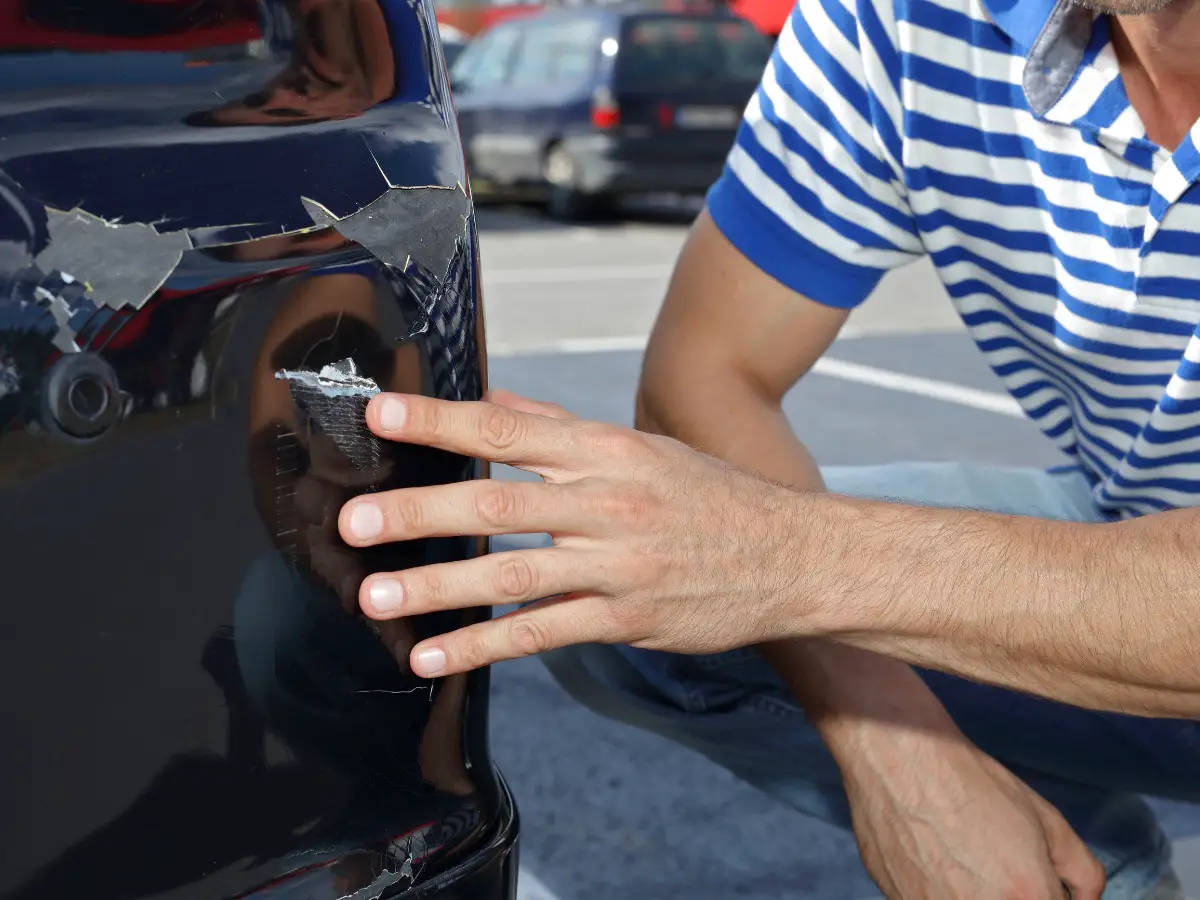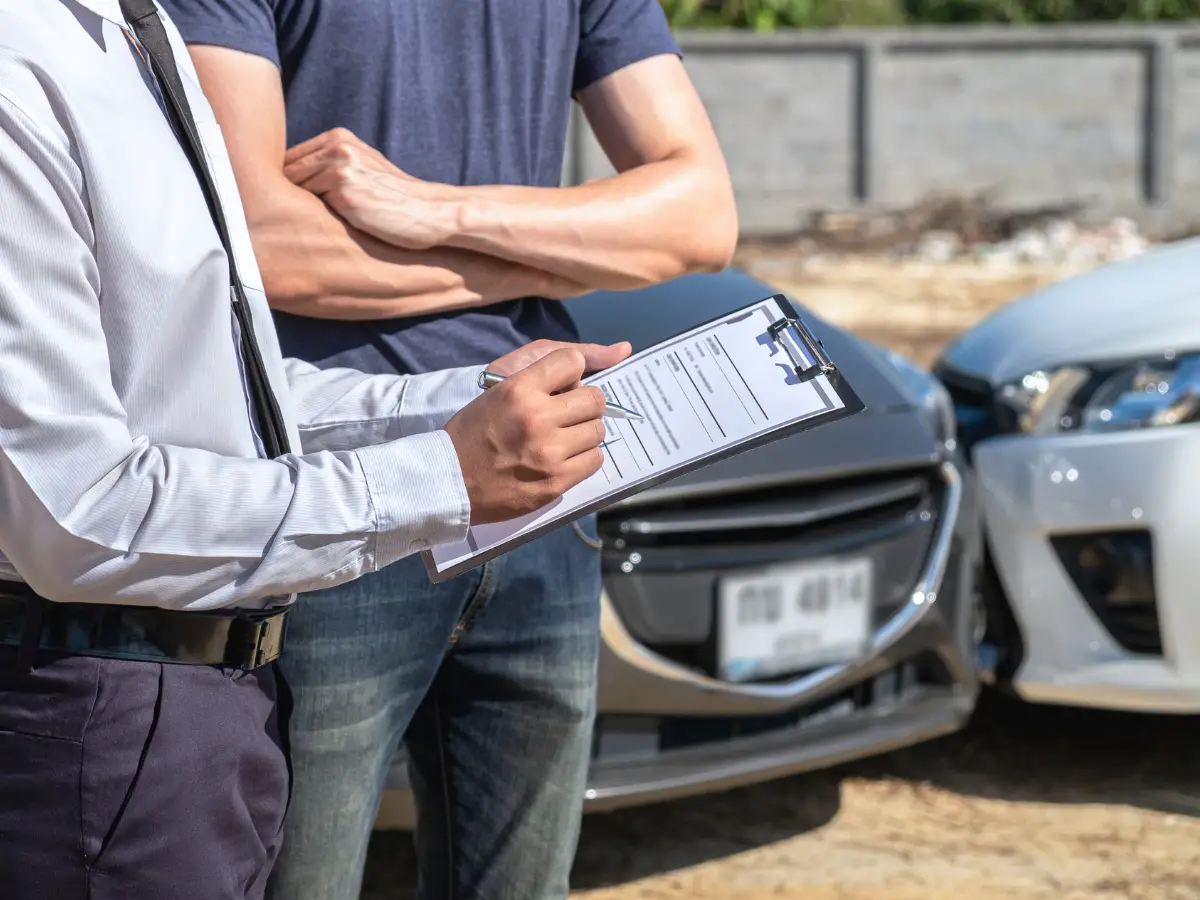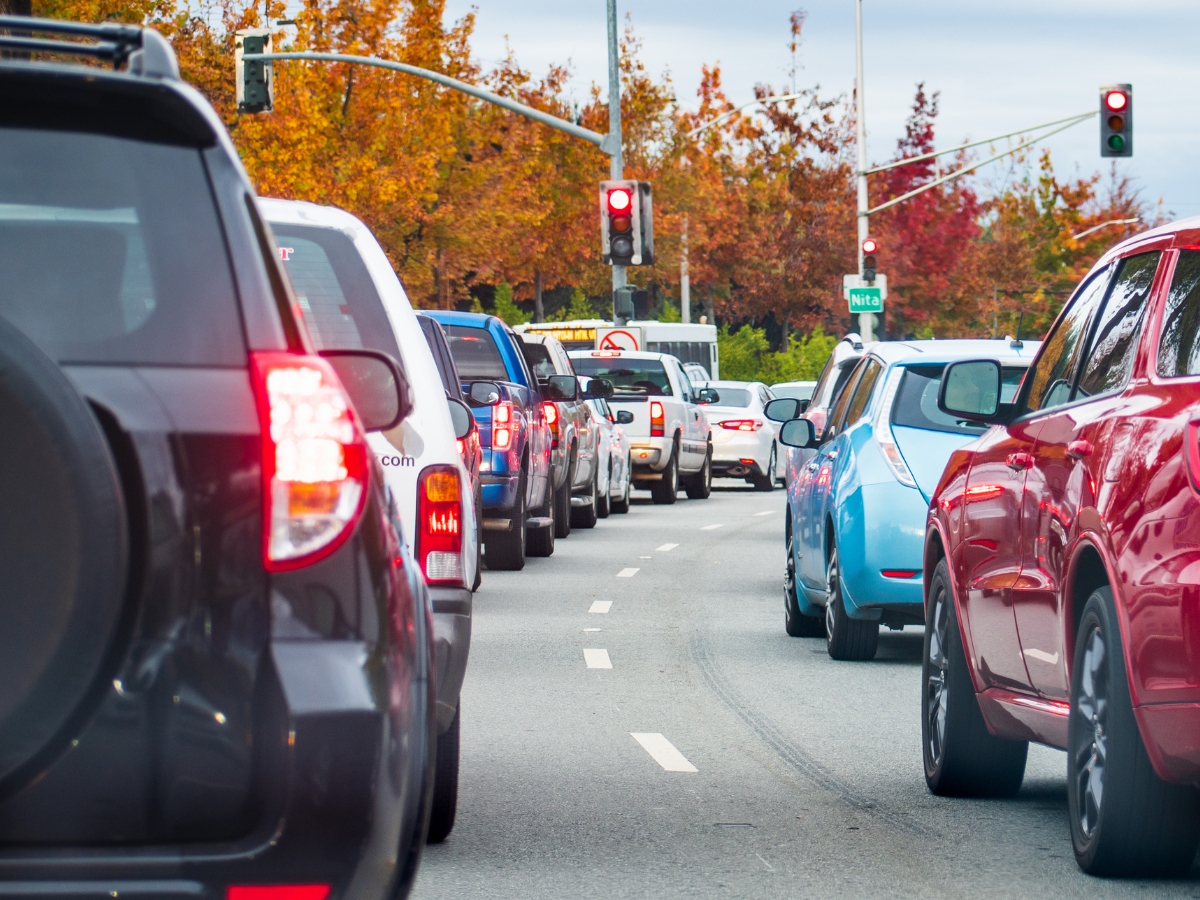California is known for its strict driving laws and many car accidents. One question that often arises is whether California is a no-fault state. The answer is no, California is not a no-fault state.
In California, the person who is responsible for the accident, also known as the “at-fault” party, is the one who is required to pay for the resulting injuries and property damage. This is because California is considered a fault or tort liability state. As a result, accident victims in California have the right to pursue compensation from the person who caused their accident.
However, it is essential to note that California drivers still have the option to purchase no-fault insurance, which can provide additional benefits in the event of an accident.

Understanding No-Fault and Fault States
In the United States, auto insurance laws vary from state to state. One of the main differences between states is whether they are considered no-fault or fault states.
In a no-fault state, drivers must carry personal injury protection (PIP) insurance, which covers medical expenses and lost wages, regardless of who caused the accident. The idea behind no-fault insurance is to reduce the number of lawsuits resulting from car accidents. The 12 no-fault states are Florida, Hawaii, Kansas, Kentucky, Massachusetts, Michigan, Minnesota, New Jersey, New York, North Dakota, Pennsylvania, and Utah.
On the other hand, in a fault or at-fault state, the driver who is found to be at fault for the accident is responsible for paying for the damages and injuries caused by the accident. This means that the driver’s insurance company will cover the cost of damages and injuries for the other driver(s) involved in the accident. California is an example of an at-fault or tort state.
It’s important to note that some states have a hybrid system, which combines elements of both no-fault and fault systems. For example, in Kentucky, New Jersey, and Pennsylvania, drivers have the option to choose between no-fault and at-fault insurance.
Understanding the difference between no-fault and fault states is crucial for drivers when selecting their auto insurance coverage. It’s important to choose a policy that meets the requirements of their state and provides adequate coverage in the event of an accident.

California’s Car Insurance Laws
California’s car insurance laws require all drivers to carry liability insurance. Liability insurance is designed to protect the driver from financial responsibility in the event of an accident. Liability coverage includes bodily injury and property damage coverage.
California law mandates that drivers carry at least $15,000 in bodily injury insurance to one person, $30,000 for more than one person, and $5,000 for property damage. Liability insurance coverage is required to pay for damages that the driver causes to others in an accident.
In California, drivers are not required to carry no-fault insurance. This means that the person responsible for the accident is liable for the resulting injuries and property damage. Drivers in California do retain their right to sue for additional damages.
It is important to note that liability insurance only covers damages caused by the driver to others. It does not cover damages to the driver’s own vehicle or injuries sustained by the driver in an accident. Drivers who want insurance coverage for their own vehicle and injuries will need to purchase additional insurance coverage.
In addition to liability insurance, California law requires drivers to carry uninsured motorist coverage. Uninsured motorist coverage protects drivers in the event that they are involved in an accident with a driver who does not have insurance or does not have enough insurance to cover the damages.
Overall, California’s car insurance laws are designed to protect drivers and ensure that they are financially responsible for any damages they cause in an accident. By carrying the required insurance coverage, drivers can drive with confidence knowing that they are protected in the event of an accident.

Accident and Injury Claims in California
When it comes to accidents and injuries in California, it is important to understand the state’s laws regarding fault and liability. As previously mentioned, California is a fault state, meaning that the person responsible for causing an accident is also responsible for any resulting injuries and damages.
If someone is injured in a car accident in California, they may be able to file a personal injury claim against the at-fault driver’s insurance company. This claim can help cover medical expenses, lost wages, and other damages resulting from the accident. However, it is important to note that California does not require drivers to carry personal injury protection (PIP) insurance, which can make it more difficult to receive compensation for injuries.
In some cases, a personal injury claim may not be enough to cover all of the damages resulting from an accident. In these situations, the injured party may choose to file a lawsuit against the at-fault driver. This can involve litigation and a potentially lengthy legal process. However, if successful, a lawsuit can result in a settlement that covers all of the damages incurred.
It is important to note that California has a pure comparative negligence system, which means that even if someone is partially at fault for an accident, they may still be able to recover damages. However, the amount of compensation they receive will be reduced by their percentage of fault.
Overall, navigating the process of filing an accident or injury claim in California can be complex. It is important to seek the guidance of an experienced personal injury attorney to ensure that you receive the compensation you deserve.

Role of Negligence and Comparative Negligence
In California, negligence plays a crucial role in determining fault in personal injury cases. Negligence refers to the failure to exercise reasonable care that results in harm or injury to another person. In cases where negligence is a factor, the party who is found to be negligent is held responsible for the damages caused.
California follows the legal doctrine of comparative negligence, which means that fault can be shared among multiple parties involved in an accident. In a comparative negligence case, the court determines the percentage of responsibility for each party involved. The percentage of responsibility determines the amount of damages each party is responsible for paying.
California uses pure comparative negligence, which means that a plaintiff can recover damages even if they are partially at fault for the accident. The amount of damages a plaintiff can recover is reduced by their percentage of responsibility for the accident. For example, if a plaintiff is found to be 25% responsible for an accident and the damages are $100,000, the plaintiff can recover $75,000.
The percentage of responsibility is determined by the court based on the evidence presented. Factors that can be considered include the actions of each party leading up to the accident, the severity of the injuries, and the extent of the damages. The court may also consider any evidence of contributory negligence, which refers to actions by the plaintiff that contributed to the accident.
In cases where multiple parties are involved, each party is responsible for paying damages based on their percentage of responsibility. For example, if two parties are found to be equally responsible for an accident, each party is responsible for paying 50% of the damages.
Overall, negligence and comparative negligence play a significant role in determining fault and damages in personal injury cases in California. It is important to work with an experienced attorney who can help navigate the complexities of these legal doctrines and ensure that your rights are protected.

Compensation and Recovery
In California, compensation and recovery for car accidents are based on the fault system. This means that the party responsible for the accident is liable for damages caused to the other party. The liable party is required to pay for the medical bills, lost wages, rehabilitation, and other expenses incurred by the injured party.
If you are involved in a car accident in California, you have the right to seek compensation for your medical bills, medical expenses, pain and suffering, lost wages, and other damages. To do so, you must prove that the other party was at fault for the accident. Once you have established fault, you can file a claim with the at-fault driver’s insurance company.
In California, there is no cap on the amount of compensation you can receive for your damages. However, there is a statute of limitations for filing a claim. You have two years from the date of the accident to file a claim for personal injury or property damage.
If you are unable to reach a settlement with the at-fault driver’s insurance company, you may need to file a lawsuit to recover damages. In this case, it is important to consult with an experienced personal injury attorney who can help you navigate the legal process.
Recovering from a car accident can be a long and difficult process. In addition to physical injuries, you may also experience emotional trauma and financial stress. It is important to seek medical treatment as soon as possible and to document all of your expenses related to the accident. This will help you build a strong case for compensation and recovery.
At-Fault Parties and Insurance Companies
In California, the at-fault party is responsible for paying for damages and injuries resulting from a car accident. This means that the person who caused the accident is held liable for all the damages suffered by the other party. The at-fault party’s insurance company is responsible for paying for the damages and injuries up to the policy limits.
Insurance companies in California are required to investigate car accidents to determine which party was at fault. They will consider a variety of factors, including the police report, witness statements, and physical evidence at the scene of the accident. Once they have determined who was at fault, they will negotiate with the other party’s insurance company to determine how much each company will pay.
It is important to note that insurance companies in California are not required to agree on fault or damages. If the two insurance companies cannot agree on who was at fault or how much each company should pay, the parties may need to go to court to resolve the issue.
If a driver is found to be at fault for a car accident in California, their insurance rates may increase. Insurance companies use a variety of factors to determine rates, including driving history, age, and gender. Drivers who are found to be at fault for accidents may be considered higher risk and may see an increase in their insurance premiums.
Overall, it is important for drivers in California to understand the state’s at-fault system and the role of insurance companies in determining fault and paying for damages. By driving safely and following the rules of the road, drivers can help reduce the likelihood of being involved in a car accident and being found at fault.
Legal Assistance in Car Accidents
In California, car accidents can be complicated legal affairs, especially when it comes to determining who is at fault. If you have been in an accident, it is important to seek legal assistance from a qualified lawyer who can help you navigate the legal system and protect your rights.
A personal injury attorney can help you understand your legal options and guide you through the process of filing a claim for compensation. Many lawyers offer free consultations, which can be a valuable opportunity to discuss your case and get advice from an experienced professional.
Car accident attorneys specialize in helping clients who have been injured in car accidents. They can help you gather evidence, negotiate with insurance companies, and represent you in court if necessary. A good car accident lawyer will be knowledgeable about the laws and regulations that apply to your case and will work tirelessly to protect your rights and interests.
When choosing a lawyer, it is important to find someone who has experience with cases similar to yours. Look for a lawyer who has a track record of success and who is willing to work on a contingency basis, which means that they will only get paid if you win your case.
In summary, legal assistance is critical in car accident cases in California. A personal injury attorney or car accident lawyer can provide valuable guidance and support throughout the legal process. If you have been in an accident, it is important to seek legal help as soon as possible to protect your rights and ensure that you receive fair compensation for your injuries.
Rights and Restrictions in California
California is a fault state, which means that drivers involved in an accident can sue the at-fault party for damages. However, California law also imposes certain restrictions on the right to sue for damages.
Under California law, drivers must carry liability insurance with a minimum coverage of $15,000 per person in bodily injury liability and $30,000 per accident in bodily injury liability. If a driver is found to be at fault for an accident, their insurance company will be responsible for paying damages up to the policy limit.
While California drivers have the right to sue for damages, they must also comply with certain restrictions. For example, California law requires drivers to file a claim with their own insurance company before filing a lawsuit against the at-fault driver. Additionally, California law imposes a statute of limitations on the right to sue for damages.
In California, drivers generally have two years from the date of the accident to file a lawsuit for damages. Failure to file a lawsuit within this time frame will result in the loss of the right to sue.
It is important to note that California’s restrictions on the right to sue for damages only apply to bodily injury claims. Drivers are still able to sue for property damage resulting from an accident.
In summary, while California is a fault state, drivers must comply with certain restrictions when suing for damages. Drivers must carry liability insurance, file a claim with their own insurance company before filing a lawsuit, and comply with the statute of limitations. Failure to comply with these restrictions may result in the loss of the right to sue for damages.
Frequently Asked Questions
What does no-fault mean in California?
In California, no-fault insurance means that each driver’s own insurance company pays for their medical expenses, regardless of who caused the car accident. This system is designed to reduce the number of lawsuits resulting from car accidents.
What is the fault rule in California?
California is a fault-based state, which means that the driver who is found to be at fault for the car accident is responsible for paying for the damages and injuries resulting from the accident. California follows a pure comparative negligence standard, which means that fault can be shared in all circumstances.
What happens if you are at fault in a car accident in California?
If you are found to be at fault in a car accident in California, you may be held responsible for paying for the damages and injuries resulting from the accident. Your insurance rates may also increase, and you may face legal consequences if you were breaking the law when the accident occurred.
Can both drivers be at fault in California?
Yes, both drivers can be found to be at fault in a car accident in California. In such cases, fault is assigned based on the degree of each driver’s negligence. Each driver is then responsible for paying for the damages and injuries resulting from the accident based on their percentage of fault.
How does fault affect car insurance rates in California?
If you are found to be at fault in a car accident in California, it is likely that your insurance rates will increase. Insurance companies use a driver’s accident history and driving record to determine their rates, and drivers with a history of accidents or traffic violations are considered to be higher risk.
What are the benefits of living in a no-fault state?
Living in a no-fault state like California can have several benefits. For one, it can reduce the number of lawsuits resulting from car accidents, which can save time and money for everyone involved. Additionally, it can provide quicker access to medical care and compensation for injuries resulting from car accidents.




